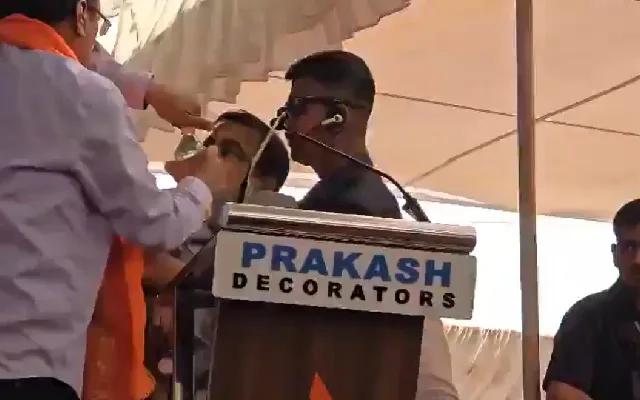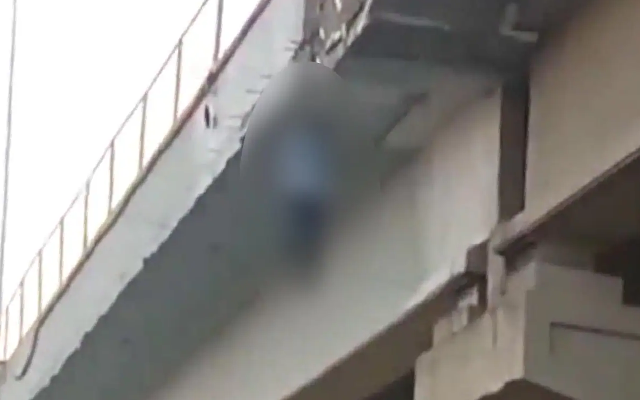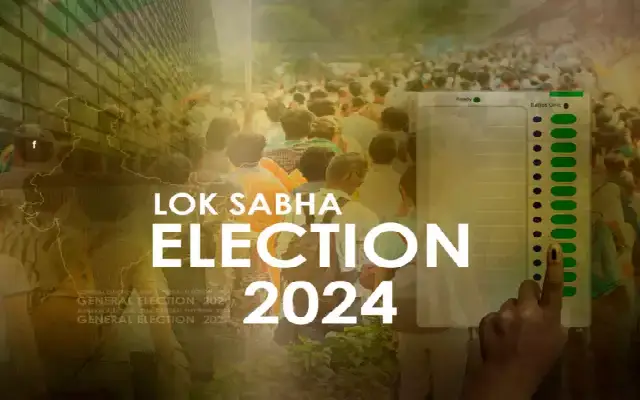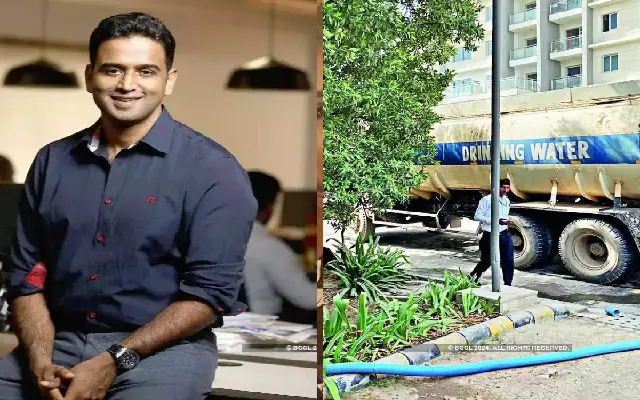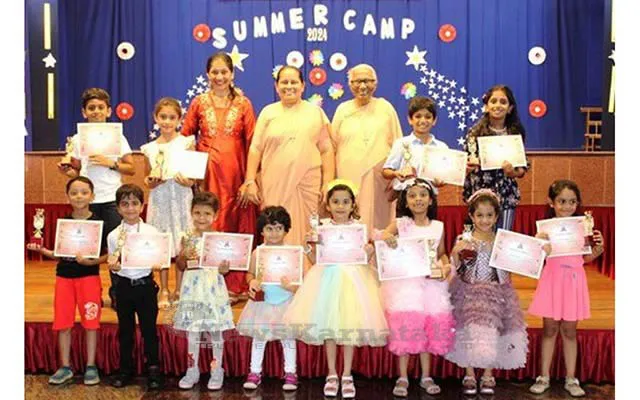“Thousands have lived without love, not one without water”. W. H. Auden – This was probably the inspiration, for the ‘Yettinahole drinking water project’ which sought to divert water from the Nethravathi water basin of Dakshina Kannada to the comparatively parched eastern districts of Kolar and Chikballapur. It was also politically correct and expedient. It is another matter that Dakshina Kannada district is already facing a water crunch, especially in the summer months.
 Despite very strong objections raised for different reasons in both Dakshina Kannada and Chickballapur, one of the beneficiaries of the project (as they believe that would get less than the promised water), Veerappa Moily the then union environment minister, and Member of Parliament representing the Chikkaballpur constituency laid the foundation stone of the project in Chikkaballapur, just before the Loksabaha Elections in March 2014, and the Government seems to be pushing ahead with the project, albeit quietly.
Despite very strong objections raised for different reasons in both Dakshina Kannada and Chickballapur, one of the beneficiaries of the project (as they believe that would get less than the promised water), Veerappa Moily the then union environment minister, and Member of Parliament representing the Chikkaballpur constituency laid the foundation stone of the project in Chikkaballapur, just before the Loksabaha Elections in March 2014, and the Government seems to be pushing ahead with the project, albeit quietly.
Consequently, Doddayya, a paddy grower in Helli Village on the outskirts of Sattigala gram panchayat in Sakleshpura, is aware of the ‘Yettinahole drinking water project’, but remains unaware of the full implications of the project on him, his land, his eco system, and his future, and this is true of most farmers in the project area, we found out, during a visit to the site.
What is the ‘Yettinahole Project’ all about?
The ‘ Yettinahole Diversion Project’ seeks to divert the head waters of the Gundia River (a tributary of the Kumardhara, which in turn is a tributary of the Netravathi) in the west and transfer this water to the other end of the state, in the east for irrigation and drinking water purposes. The aim is to provide 14 TMC of water for Hassan, Chikkamagalore, Tumkur and Bangalore rural and 10 TMC for Kolar and Chikkaballapur. Of this 10 TMC barely 2.81 TMC is earmarked for drinking water supply for these two districts.
A case of robbing Peter to pay Paul
It involves construction of 8 weirs ( weirs are water obstructions smaller than most conventional dams, that gather water behind them while also allowing it to flow steadily over their tops) in 2 phases at the head waters of Gundia River catchment in the West flowing Netravathi River Basin, the lifeline of the Dakshina Kannada district. However the drawings indicate the height of these dams as 15 meters from deepest foundation.
2 dams are planned across Yettinahole stream, 2 on its tributaries, 2 across Kadumanehole stream, 1 across Kerihole stream and 1 across Hongadhalla stream. All these streams are rivulets which join at various points to make river Gundia.
Seven weirs are one side of the River Hemavathi, while one, Doddanagara is on the other side, and huge pipes will transport the water under the river from 3 delivery chambers. From Doddanagara, water will be lifted again and conveyed to Delivery chamber 4 located near Harvanahalli in Sakaleshpura. Gravity will then carry the water to Tumkur to the Devaranya Durga Reservoir and from there to Chikkaballapura and Kolar respectively.
 Overall, the project envisages constructing 7 additional storage reservoirs, which will submerge villages and forest land and 10 major canals.
Overall, the project envisages constructing 7 additional storage reservoirs, which will submerge villages and forest land and 10 major canals.
Water dependability is only 50%
While the plan is to divert 24.01 TMC water between June-November from a catchment area of 89.66 sq km (8966 ha), the dependability is only 50%. Consequently the full volume will rarely be available. The structures and conveyance system have also been designed accordingly.
A recent study by the Centre for Ecological sciences of the Indian Institute of Science (IISc), led by Prof. TV Ramachandra, has found out that only 9 tmc of water will be available which prima facie, does not match the investment which according to the DPR, is Rs: 13000 Crores.
It’s a pricey diversion, more of money than water, if reports of water volumes, environmental implications, and downstream issues are taken into account.
Current Status
Currently some contracts have been awarded and preliminary work has started, but it has been stalled following a court ordered status quo in February 2015 after eight residents of the taluk filed a representative suit seeking a stay on the project, citing violations in land acquisition . They named the Chief Secretary, Managing Director of Karnataka Neeravari Nigam Ltd., the project implementing agency, Hassan Deputy Commissioner and proprietor of Megha Infrastructure Pvt. Ltd., the contractor as the respondents. Environmental Clearances, Forest Clearances, and Wildlife Clearances too are pending and Rehabilitation and resettlement of over 10 villages that it will submerge, has yet to begin.
Recently, Minister for Environment and Forest B. Ramanath Rai, said that there is no contravention of any law in the work undertaken which is a preliminary one. The stage for environment clearance has not come as yet and no trees have been cut so far.
A site visit has evidence to the contrary. Pipes have been laid at Hebbasale, and the 5th weir is already half way up at Yettinahalla. Hundreds of pipes are stocked across the area and according to farmer who desired to remain anonymous, over 500 trees have been cut till now.
Another farmer, who also did not wish to be named stated that a few farmers opposing the project have obtained an injunction order while others including me have not taken it, as “we believe anonymity will help us retain our land”
An environmental nightmare
Environmentalists say that the region has exceptional fish, reptiles and other creatures’ biodiversity, with several new species being discovered from the region, while the Environmental Management Plan of the DPR holds the complete opposite – the fish diversity in most streams is poor! Additionally, the Pushpagiri Sanctuary, one of the specific World Heritage Sites in the Western Ghats is likely to suffer as the project comes within 10 kms of the region.
Dinesh Holla of the Sahyadri Samrakshana Samuchhaya says that the Shola forest in the region which houses endangered and endemic species, has already paid the price as several trees have been cut due for the project. Apart from this, man-animal conflicts in Sakaleshpura are already on the rise and the project is likely to affect the Kagenire forest area, which comes under the elephant corridor and the Mysuru Elephant reserve.
Activists, residents to continue their agitation
On Tuesday August 25, Kishore Kumar from Malnad Janapara Horata Samiti and Dinesh Holla from Sahyadri Samrakshana Samuchhaya along with other activists and farmers condemned the statement made by Ramanath Rai. Addressing a group of press persons they said, “The Government did not hold a single public meeting while the DRP states it does, neither have they tried to understand the people’s apprehensions.”
A half built dam and hundreds of pipes in the region has confused the general public. While agricultural land has been taken on lease and pipes are manufactured there, the government had very promptly shut the Shiradi ghat down for concreting works – so that even the works of ‘Yettinahole Project’ would be far from the public glare, they alleged. They vowed to continue their agitation.




















